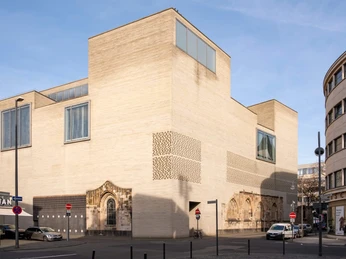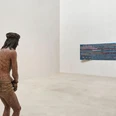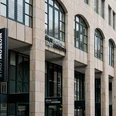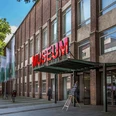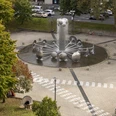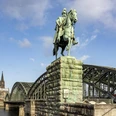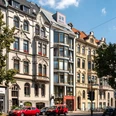The Kolumba’s success is certainly based on its own extraordinary collection of works dating from late antiquity to the present. But it’s mainly due to its unusual museum concept, which provides space for new and personal insights, in perfect harmony between the museum building’s architecture and its location.
The concept: refreshingly free, unsettling & exciting
The special feature of the Kolumba is striking: you’ll find no labels or explanatory texts in the exhibition. There are no chronologies and no directly visible connections due to an object’s style or date of creation. If you wish to understand an exhibit, you need to analyse it, contemplate it and rely on your own thinking. This is consistent with the private and quietly poetic aura that emanates from the museum’s rooms.The Kolumba Museum repeatedly renews its space for contemplation. Its active museum concept calls for periodically creating new combinations of the works in its own collection, except for a few permanent exhibits, and exhibiting them in terms of an overarching theme or context. Sacred art is combined with modern art, and old and new are confronted with one another or simply exist in tandem. For example, a sacred relic might be displayed next to a spatial installation, or a Madonna that is 500 years older could be shown together with a modern artwork or with a sound installation. And you stand between them — as an observer and a subject. The theme of each exhibition serves as a connecting element and a starting point for reflection.
Together with your admission ticket you will receive a short introduction and guide to the museum’s site, architecture, collection and currently exhibited objects. The rest is up to you — in your thoughts, associations and perspectives.
The architecture of Kolumba: classic, austere — and continuous
The concept of simultaneity and juxtaposition also characterises the museum building, which was designed by the Swiss architect Peter Zumthor. This new building, which was constructed in 2007, stands on the original floor plan and the ruined walls of the Late Gothic church of St. Kolumba, which date back to the year 980. The church was almost completely destroyed during World War II except for a statue of the Virgin Mary created between 1460 and 1480. The museum’s floor-to-ceiling windows open up to a panorama of Cologne’s postwar architecture with its patchwork aesthetics and the Cathedral’s spires in the background.The museum thus serves as a fluid and continuous symbol of architectural history — and you can experience the site, the collection and the architecture as an almost sacred unity that repeatedly reflects more than 2,000 years of culture into the present. Incidentally, unlike most museums, the Kolumba is also open on Mondays!
Good to know
Eligibility
Bad Weather Offer
Suitable for any weather
for Groups
for Class
for families
for individual guests
Openings
Price info
Price adult: €8.00
Price child: Free entry
Price reduced: €5.00
Directions & Parking facilities
Our recommendations
Nearby


